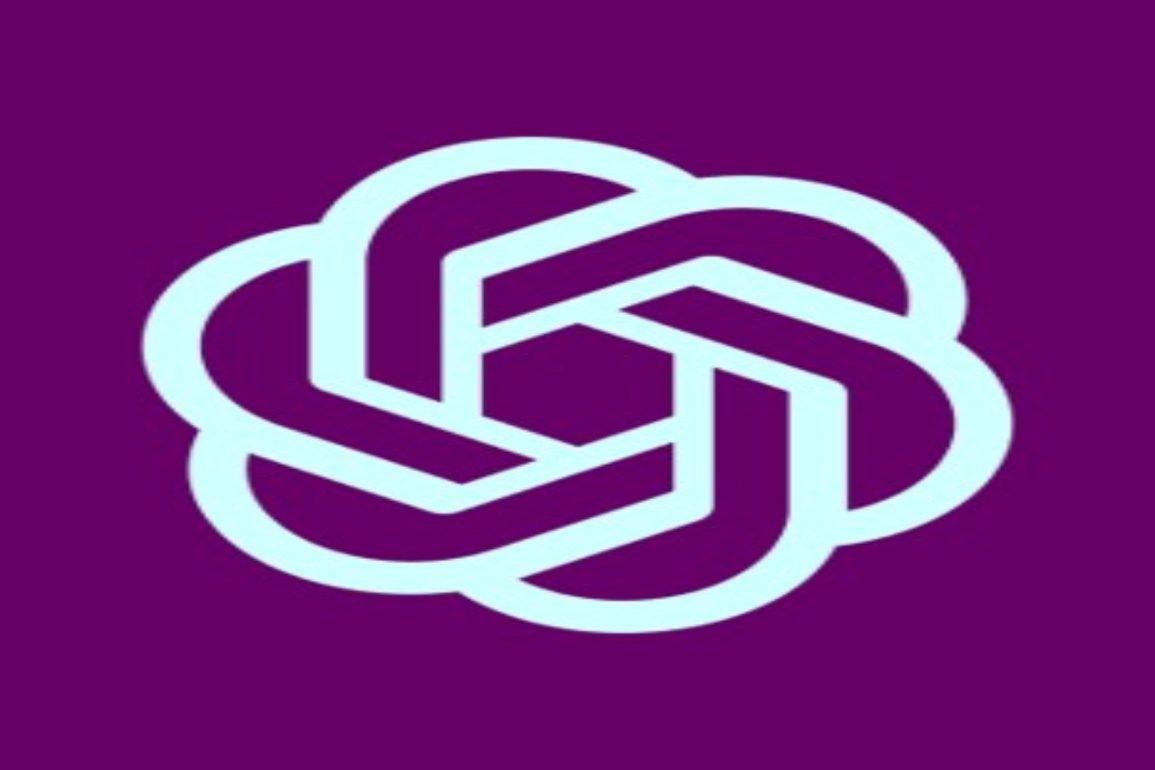- Summary:
- AI has driven many people to ask themselves what its limitations are. In this article, we look at how to effectively use ChatGPT for trading.
The ChatGPT chatbot is an AI-powered natural language processing tool capable of holding natural-sounding conversations with users. In fact, ChatGPT is what sparked the current AI revolution being experienced after coming into the market with a bang in 2023.
Using ChatGPT for trading
ChatGPT is a powerful tool that stock traders can employ to improve their trading strategies and outcomes. It primarily uses historical data to generate trading strategies and identify market trends. By asking questions about current market patterns,traders can receive ChatGPT responses that are both clear and easy to grasp, empowering them to make informed judgements.
As a trading assistant, ChatGPT can help traders with tasks such as researching the market, analysing historical trends, backtesting trading methods, and improving trading tactics. However, does ChatGPT is not supposed to be used as an exclusive trading tool, rather, you should use it as your trading assistant without neglecting your own research from other sources.
Trading Strategies using ChatGPT
- Conduct fundamental analysis research
Much as trades are executed on charts, fundamental analysis id the barometer for measuring a company’s performance record and likely market conditions in the future. With ChatGPT, investors can get a rundown of the stock’s performance over a defined period, like one month, one year, 5 years etc., within seconds.
On the screenshot below, I wanted to find out NVIDIA’s performance since 2023.
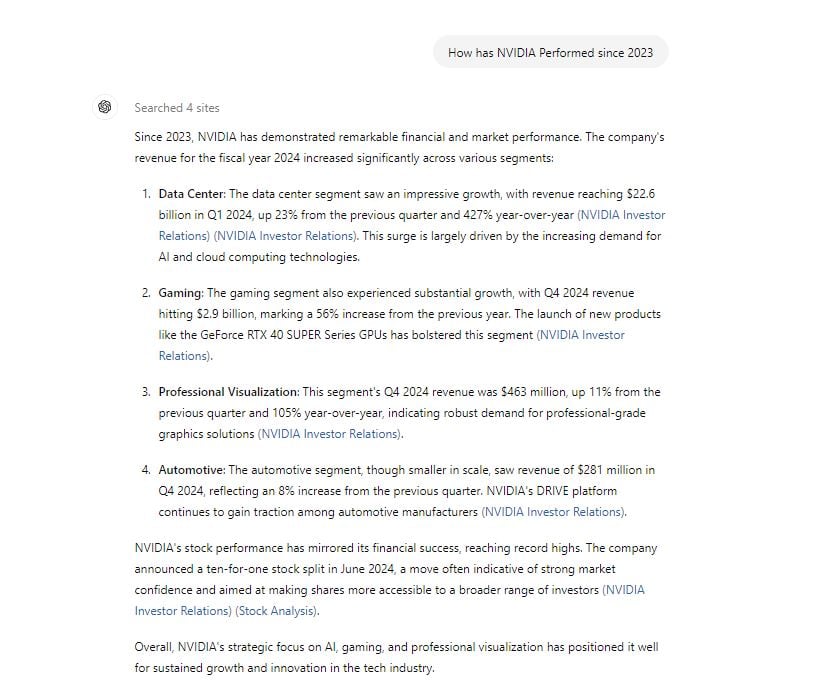
Based on the fundamental analysis above, I can gauge whether NVIDIA has a strong foundation now and whether its growth prospects are promising. Having confirmed that the company is in a healthy position, I can then proceed to conduct technical analysis to help me set up my trade.
- Determine the appropriate timeframe to use for your trade
When using ChatGPT for trading, you can ask for advice on the best timeframe to use, as different timeframes require different levels of concentration, expertise and technical analysis tools. In the screenshot below, I got responses from ChatGPT on the different timeframes to use for day trading NVDA shares, and I got responses explaining the pros and cons of trading in 4-hour, 1-hour, 30-minute, and 15-minute timeframes. By reading these pros and cons, I can choose the timeframe that best suits me.
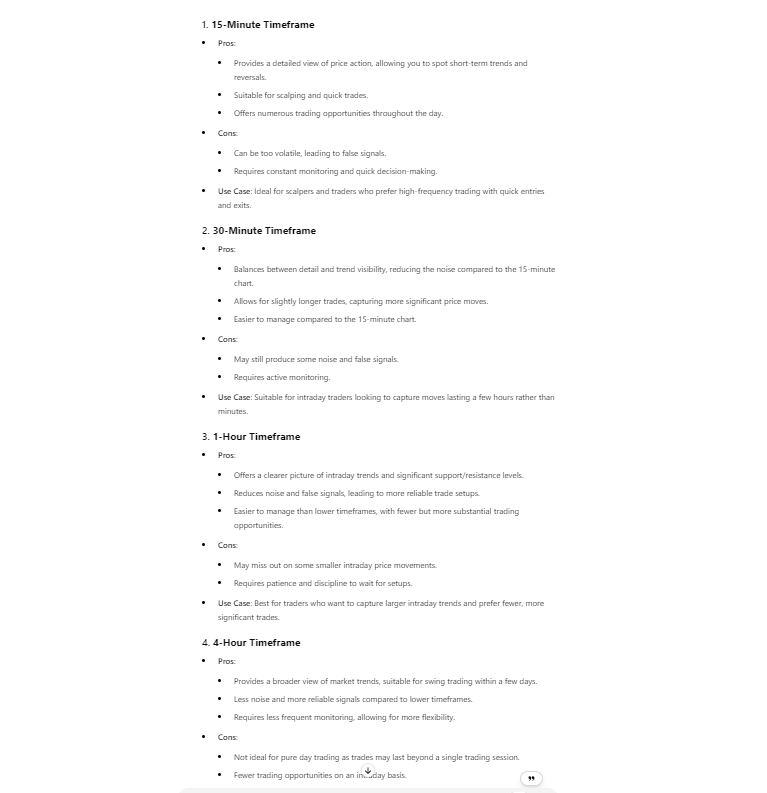
- Determine the trading strategy to use
There are several trading strategies that you can use for any particular timeframe. Depending on your skill level, these have the potential to either giove you a profit or a loss. Below are some of the strategies given to me by ChatGPT for trading on a 4-hour timeframe. Note that the AI went as far as explaining how each strategy works and telling me where to put Take Profit and Stop Loss levels.
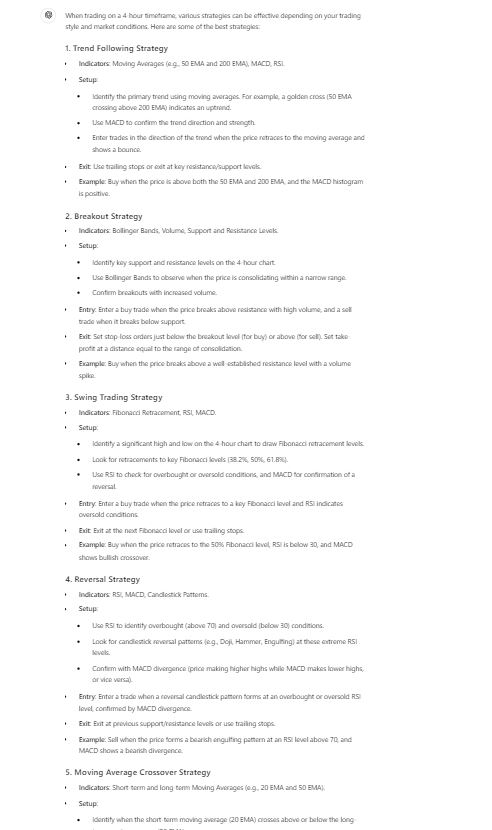
- Decide which technical analysis tools and indicators to use
Having determined my timeframe and trading strategy, next, I proceed to identify the best indicators to use on my trade setup. One of the most reliable technical analysis indicators are moving averages. They help us weigh the current performance of a stock relative to its recent price movements, and with that we can extrapolate the likely movements in different timeframes. Bollinger Bands and Relative Strength Index are also useful indicators on price movement and likely breakout points.
Below are some of the key pointers I got on using moving averages for my setup
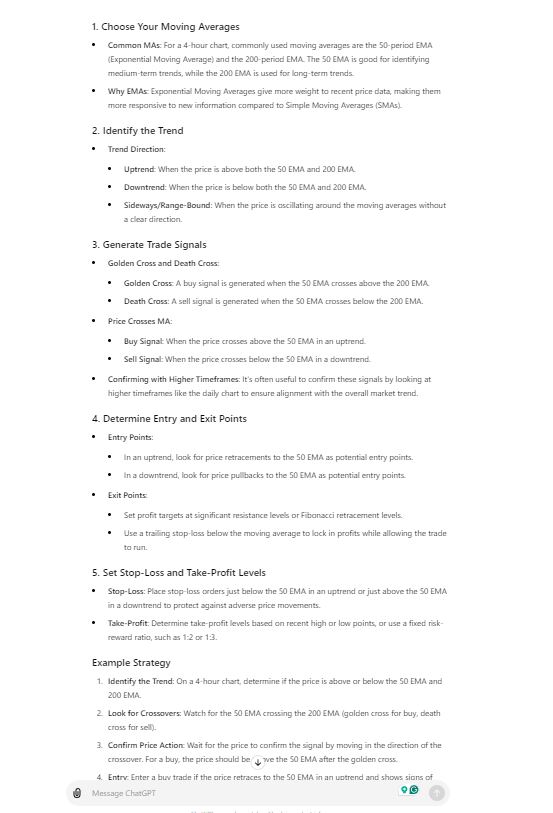
In summary
Like many other artificial intelligence products available today, ChatGPT is quite efficient, but it still has its flaws. The tool’s limited market knowledge and lack of real-time data availability is one of its key limitations for traders who want to use it exclusively for trading. When you use ChatGPT for trading, it does not offer do not expect a personalised experience. Rather, each query relating to a particular data and prompt will return similar results for different traders. Therefore, traders using ChatGPT should exercise caution, and should not be overly optimistic about the information they receive.


